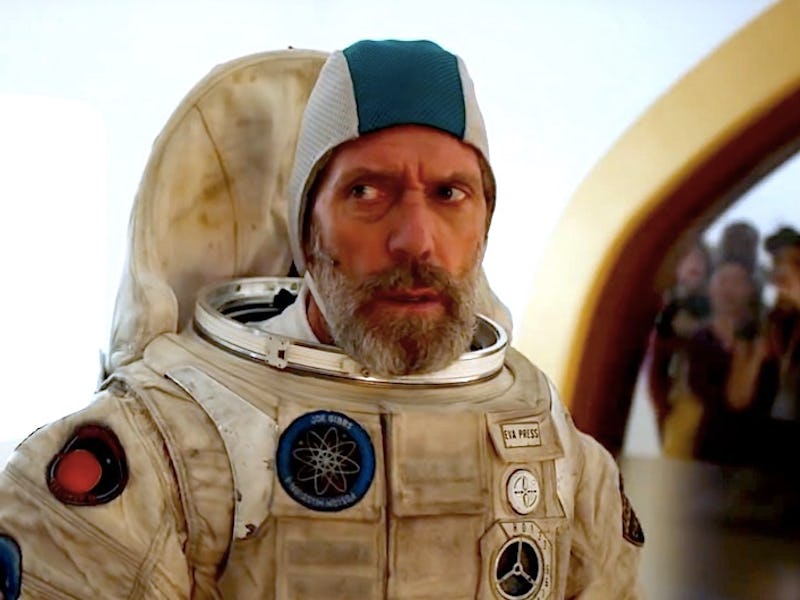Avenue 5 rebels against traditional spaceship sci-fi in one visual way
Cinematographer Eben Bolter tells Inverse how he fought against genre norms.

In space, in the seventies and eighties, nobody could hear you scream. But these days, not only can we hear everyone scream in contemporary science fiction, but we also see the details of space mayhem in rich HD. But, unlike the grim, cool lighting of the Nostromo in Alien or even the blue and grey interior of the Starship Discovery, HBO's new sci-fi comedy Avenue 5 dares to use color in a bold and accessible way. In doing so, the series is fighting against an avalanche of filmed spaceship-oriented sci-fi that, for the most part, all looks the same.
Avenue 5 cinematographer Eben Bolter tells Inverse how he approached the mood for this series, and how certain impressive outer space effects were pulled-off in the simplest way possible.
Outside of Luc Besson movies like The Fifth Element and Valerian, or perhaps the 2005 Hitchhiker's Guide to the Galaxy, it's slightly difficult to find filmed sci-fi set on a spaceship that looks convincing without relying on a muted color palette.
That's something Bolter had in mind while working on Avenue 5.
"Looking at the science fiction, and particularly space genres they tend to use a desaturated or cold palette," Bolter says. "So we wanted to do the opposite with Avenue 5, favoring a warm and rich palette and introducing color as much as possible. We were lucky to have so many sets on the series, sixty-eight in total by the end of the eight episodes, so there were always new opportunities to try new color combinations and really fill out our overall palette."
Although Avenue 5 is a comedy, part of the reason the show is funny is that the audience believes the peril happening on the future space cruise is 100 percent real. In the very first episode, "I Was Flying," the gravity on the spaceship is inverted, sending passengers and crew tumbling "up" and injuring 100 people.
This scene is deceptively simple. But, if you think about what science fiction films have been trying to accomplish with zero-gravity sequences for the past 50 years, it's a small masterpiece. At no point are you impressed by the gravity flip. It's just something that happens and feels totally real.
"That was a really difficult sequence to pull off," Bolter says. "It was very much a combination of various techniques and needed a strong collaboration across departments to pull off each section. Simon Bowles, our designer, designed several of the sets on a gimbal, so we were able to rotate them to shift the real gravity point."
The bottom line is that the gravity shift in the very first episode of Avenue 5, is, in some senses, a real gravity shift. The countless extras we see careening in momentary freefall, are, in fact, actually being moved by actual gravity. Putting a set on a gimbal in a sci-fi film or TV series isn't new of course. But, the scale of this scene is significant.
But, what makes this visual effect so interesting is that, unlike something like The Matrix, the gravity flip in Avenue 5 isn't a special effect we're meant to marvel at. This is just part of the subtle world-building in a spaceship sci-fi show that doesn't care about its spaceship sci-fi.
Avenue 5 is the brainchild of Armando Iannucci, famous for The Thick of It and Veep. Bolten points out that it was important to retain the hand-held, documentary style of those shows, which in turn was another way to distinguish this series against other, perhaps more formal styles of science fiction.
"There’s a real naturalistic beauty to making decisions on the fly," Bolter says. "Landing on lines and punch zooming on them for comedic effect. It very much feels like editing in camera and is quite nerve-racking and thrilling to perform on set. But, I think this is how you humanize the scenes. I wanted the ambition of the show to be as visually interesting and cinematic as possible."
Avenue 5 airs new episodes on HBO on Sundays.